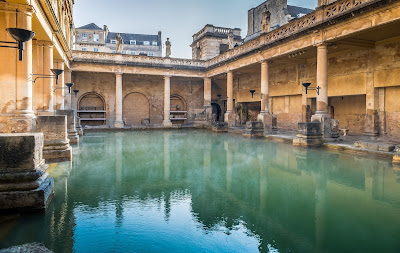In 1626 king Gustavus Adolphus of Sweden decided to built "Vasa", a warship that Baltic sea have never seen before. He was very focused on his naval forces, believing that war success depends on the strength of his ships. After more than two years of construction, Henrik Hybertsson reported that the ship is ready.
Gustavus was all the time involved in construction, asking for many changes and improvements. He knew that Vasa will be crucial in war with Poland. War that will decide who rules Baltic Sea. Henrik Hyberston, main constructor decided that the ship will be 61 meters long and 12 meters wide. Vasa had 1210 tons buoyancy, 1275 sq meters of sail and 64 main cannons. Yet before first sail Vasa became the pride of Stockholm. The ship was also a target for spies.
10th August 1628 almost everyone in Stockholm went to the docks to sea first sail of the mighty Vasa. The weather was perfect, 100 sailors with their families were ready to sail. In the harbor everything seems fined. Vasa was slowly leaving Stockholm. But just after passing rock breakwater, Vasa's construction defects became clear. The ship was too narrow and too high. Galleon had troubles not only wind mild wind but also with low waves. 120 tones of ballast could not balance weight of cannons.
Just after 1300 meters a strong blow of wind overturn board. Salty water immediately bursted into cannon holes. In mater of minutes Vasa was under the water taking lives of 30-50 men.
12 hours after sinking its captain, Hansson, was arrested and interrogated. But very quickly after it became obvious that no one on the board was responsible for this loss. Few weeks before first sail shipwrights had a stability test that proved that Vasa is dangerous and can easily overturn. Its constructor, Hybertsson died year before sinking. Swedish king was not present that day in Stockholm. He was informed two weeks later, in Prussia. He became furious and wanted to punish anyone involved in sinking. But official investigation did not found who was responsible for this tragedy.
Just hours after sinking first engineers wanted to haul out Vasa. But it became clear that this operation is too complicated and risky. For 300 years Vasa was resting 30 meters under the water.
Baltic Sea can be dangerous, but it can also greatly preserve wood. Low temperatures, less salty and without naval shipworms can conservate ships for hundreds of years. In 1956 scientists finally found the ship.
It started national collection to haul it from the bottom. After months of analysis Sweden decided that the will try to bring it back to air by special dinghies, pumps and pipes. In 1961 Vasa came back.
After years of restoration it finally stands in Stockholm and it's the largest 17th century warship that we can see today.





































